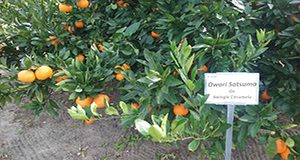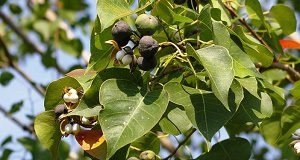Effective irrigation scheduling enables the irrigator to apply the right amount of water at the right time to meet the crop water demand. This 19-page guide presents information on average daily and weekly crop water use and crop growth stages for twelve north Florida crops that can be used to help schedule irrigation. This will allow a grower to develop a realistic irrigation schedule that minimizes plant water stress, saves water, and reduces nutrient leaching potential. Written by Vivek Sharma, Charles Barrett, De Broughton, and Thomas Obreza, and published by the UF/IFAS Department of Soil and Water Sciences, revised December 2020.
https://edis.ifas.ufl.edu/ss491
Tag: North Florida
Satsuma Mandarin Budget and Profitability Analysis for North Florida
This 16-page analysis written by Kevin R. Athearn, Peter C. Andersen, Bent V. Brodbeck, Lei Lani L. Davis, Clay Olson, Daniel K. Fenneman, Matthew Lollar, Derek Farnsworth, and Michael Perez and published by the UF/IFAS Food and Resource Economics Department provides research-based information and a description of satsuma mandarin markets, production costs, and potential returns for citrus growers who are considering establishing a satsuma grove in north Florida. Its purpose is to serve as a reference and model for growers to create their own enterprise budgets and make financial projections. An enterprise budget estimates revenues, costs, and net returns for a particular crop or farm enterprise to help growers assess the economic viability and risk of an enterprise, compare enterprises, and evaluate production or marketing changes. The budget and financial analysis may assist prospective and current satsuma growers, agricultural consultants, and lenders with planning and decision making.
http://edis.ifas.ufl.edu/fe1030
Controlling Invasive Exotic Plants in North Florida Forests
Of the more than 4,000 known plant species growing in Florida, approximately 30% are not native to Florida or the Southeast, and in the US invasive exotic species cost an estimated $120 billion each year in damages. Early detection and removal of invasive plants is the key to successful management. This publication describes many of the current methods used in north Florida forest operations to manage invasive exotic plants. It also provides references for additional sources of information. Written by Chris Demers, Patrick Minogue, Michael Andreu, Alan Long, and Rick Williams.
http://edis.ifas.ufl.edu/fr133
Tomato Cultivar Selection Considerations for Open-Field and Protected Culture in North Florida
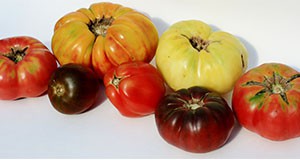
Tomatoes represent one of the most popular vegetables grown in protected culture such as greenhouses, high tunnels, or shade houses. Selecting the correct cultivar of tomato is critical and varies depending on the intended season, type of protected structure, training system, expected insect and disease pressure, post-harvest handling techniques, and intended market. This seven-page fact sheet will focus on the key factors affecting the cultivar selection decisions for growing and selling tomatoes in north Florida. Written by Blake R. Thaxton and Robert C. Hochmuth, and published by the Horticultural Sciences Department.
http://edis.ifas.ufl.edu/hs1273
Economic Contributions and Ecosystem Services of Springs in the Lower Suwannee and Santa Fe River Basins of North-Central Florida
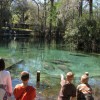 This study examined the economic contributions, consumer surplus, and ecosystem services provided by recreational use of fifteen major springs sites in north central Florida. The estimated annual economic contributions of springs-related recreational spending in north-central Florida for FY 2012/13 are summarized. Among the findings, there was $84.2 million in total visitor spending for springs recreation, and 1,160 full- and part-time jobs. This 4-page fact sheet was written by Tatiana Borisova, Alan W. Hodges, and Thomas J. Stevens, and published by the UF Department of Food and Resource Economics, April 2015.
This study examined the economic contributions, consumer surplus, and ecosystem services provided by recreational use of fifteen major springs sites in north central Florida. The estimated annual economic contributions of springs-related recreational spending in north-central Florida for FY 2012/13 are summarized. Among the findings, there was $84.2 million in total visitor spending for springs recreation, and 1,160 full- and part-time jobs. This 4-page fact sheet was written by Tatiana Borisova, Alan W. Hodges, and Thomas J. Stevens, and published by the UF Department of Food and Resource Economics, April 2015.
http://edis.ifas.ufl.edu/fe958
Native Plants That Benefit Native Wildlife in the Florida Panhandle
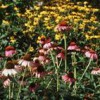 The key to enhancing wildlife (and attracting it to your property) is to provide the resources wildlife need. This means supplying food, water, and cover within the space you own and manage. Because the needs of each wildlife species for food and cover vary from one season to the next, a mix of plant species is required to meet the needs of a species all year round. And because each species has different needs, attracting and maintaining a wide variety of wildlife year round requires a wide diversity of plants. A property owner interested in attracting wildlife should nurture a wide variety of native plants to ensure that there is a large assortment of food and cover options available all the time. This 8-page fact sheet was written by Holly K. Ober and Gary W. Knox, and published by the UF Department of Wildlife Ecology and Conservation, October 2013.
The key to enhancing wildlife (and attracting it to your property) is to provide the resources wildlife need. This means supplying food, water, and cover within the space you own and manage. Because the needs of each wildlife species for food and cover vary from one season to the next, a mix of plant species is required to meet the needs of a species all year round. And because each species has different needs, attracting and maintaining a wide variety of wildlife year round requires a wide diversity of plants. A property owner interested in attracting wildlife should nurture a wide variety of native plants to ensure that there is a large assortment of food and cover options available all the time. This 8-page fact sheet was written by Holly K. Ober and Gary W. Knox, and published by the UF Department of Wildlife Ecology and Conservation, October 2013.
http://edis.ifas.ufl.edu/uw384
Veggies and Herbs: Made in the Shade A Growing Season Calendar for North Florida
 The importance of using an open shade structure for hydroponic crop culture in Florida has recently increased. Prior to the turn of the century, hydroponic culture in Florida was done inside a greenhouse structure, but it has now expanded to several other types of structures. In addition to greenhouses, production now exists in high tunnels, insect screens or net houses, and open shade-covered structures. In southern parts of Florida, outdoor hydroponic systems without any structure are becoming more common. In those cases, many operations use a polypropylene cover for freeze protection. Diversifying structures stems from growers’ desires to extend the season to meet consumer demand for a longer time period. The purpose of this publication is to indicate what crops have been successfully grown under shade in northern Florida at various times of the year. This 4-page fact sheet was written by Daniel K. Fenneman, Robert C. Hochmuth, Wanda L. Laughlin, and Sean R. McCoy, and published by the UF Department of Horticultural Sciences, November 2014.
The importance of using an open shade structure for hydroponic crop culture in Florida has recently increased. Prior to the turn of the century, hydroponic culture in Florida was done inside a greenhouse structure, but it has now expanded to several other types of structures. In addition to greenhouses, production now exists in high tunnels, insect screens or net houses, and open shade-covered structures. In southern parts of Florida, outdoor hydroponic systems without any structure are becoming more common. In those cases, many operations use a polypropylene cover for freeze protection. Diversifying structures stems from growers’ desires to extend the season to meet consumer demand for a longer time period. The purpose of this publication is to indicate what crops have been successfully grown under shade in northern Florida at various times of the year. This 4-page fact sheet was written by Daniel K. Fenneman, Robert C. Hochmuth, Wanda L. Laughlin, and Sean R. McCoy, and published by the UF Department of Horticultural Sciences, November 2014.
http://edis.ifas.ufl.edu/hs1228
ENH1094/EP359 Palms for North Florida
ENH-1094, a 16-page illustrated fact-sheet by Edwin R. Duke and Gary W. Knox, provides assistance in selecting cold hardy palms for northern Florida, including sections on growing conditions, maintentance, treating cold damage, and availability. Includes references and a 10-page table showing characteristics of palm varieties suitable for northern Florida. Published by UF Department of Environmental Horticulture, February 2008.
http://edis.ifas.ufl.edu/EP359

